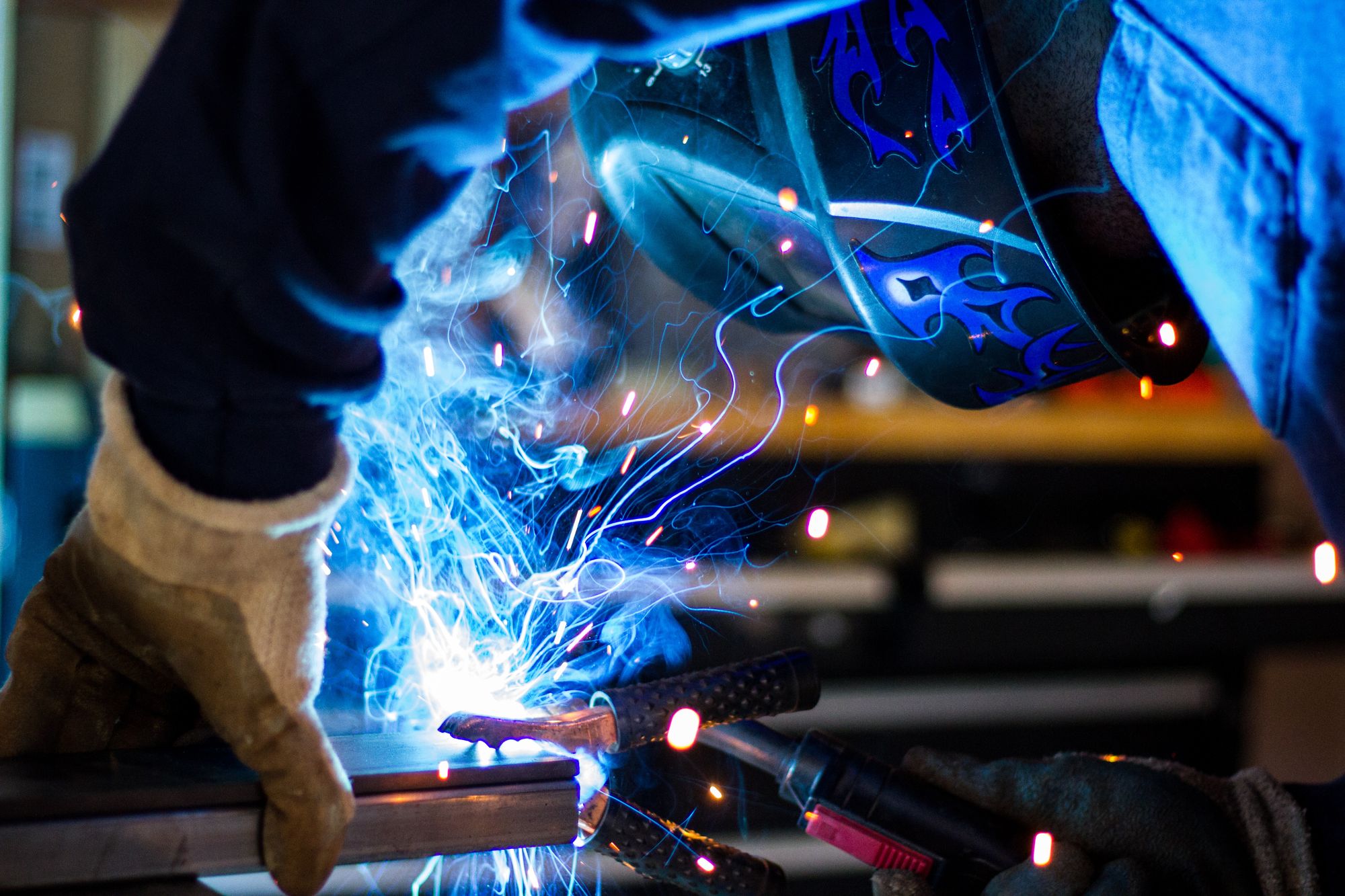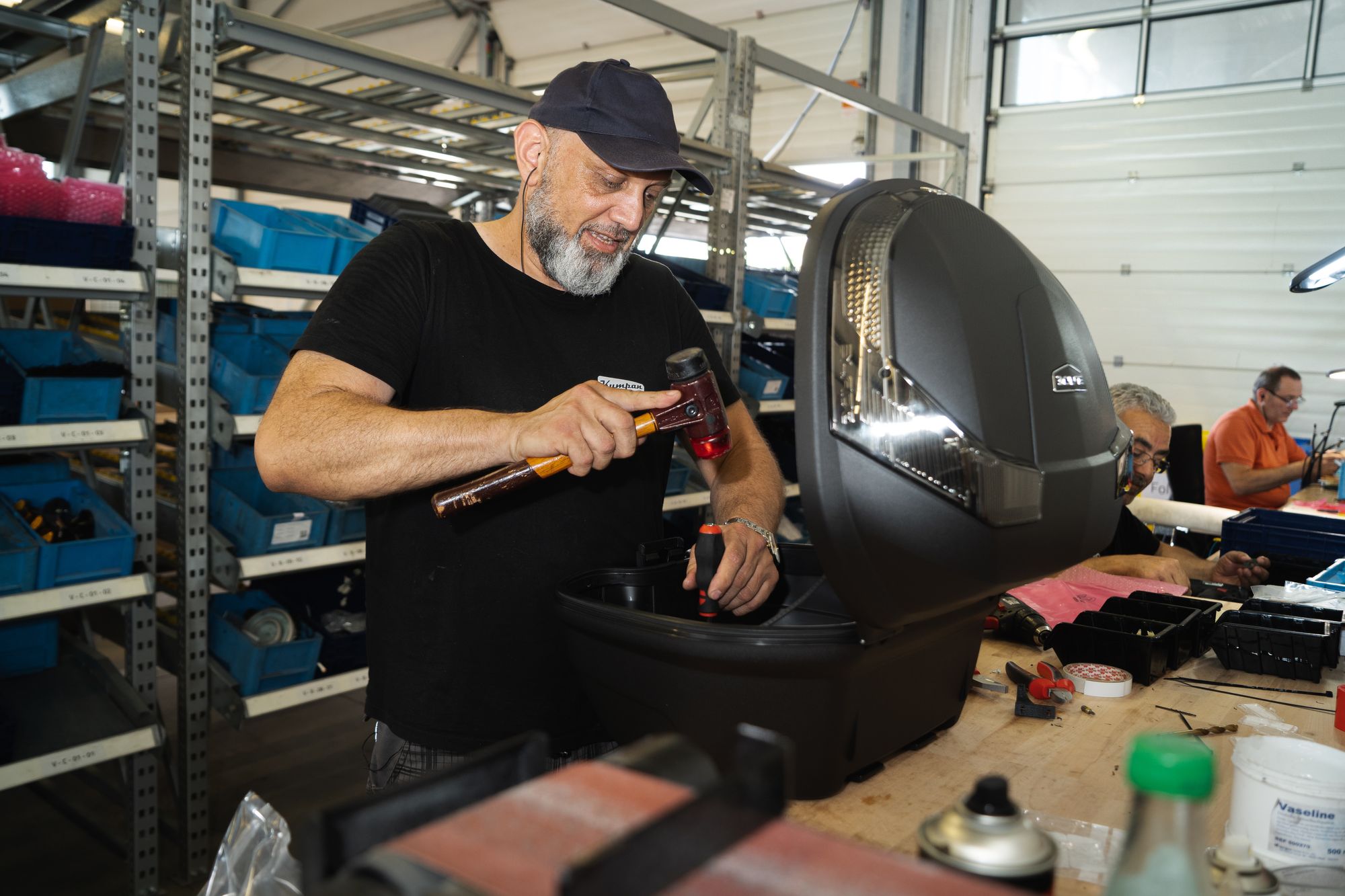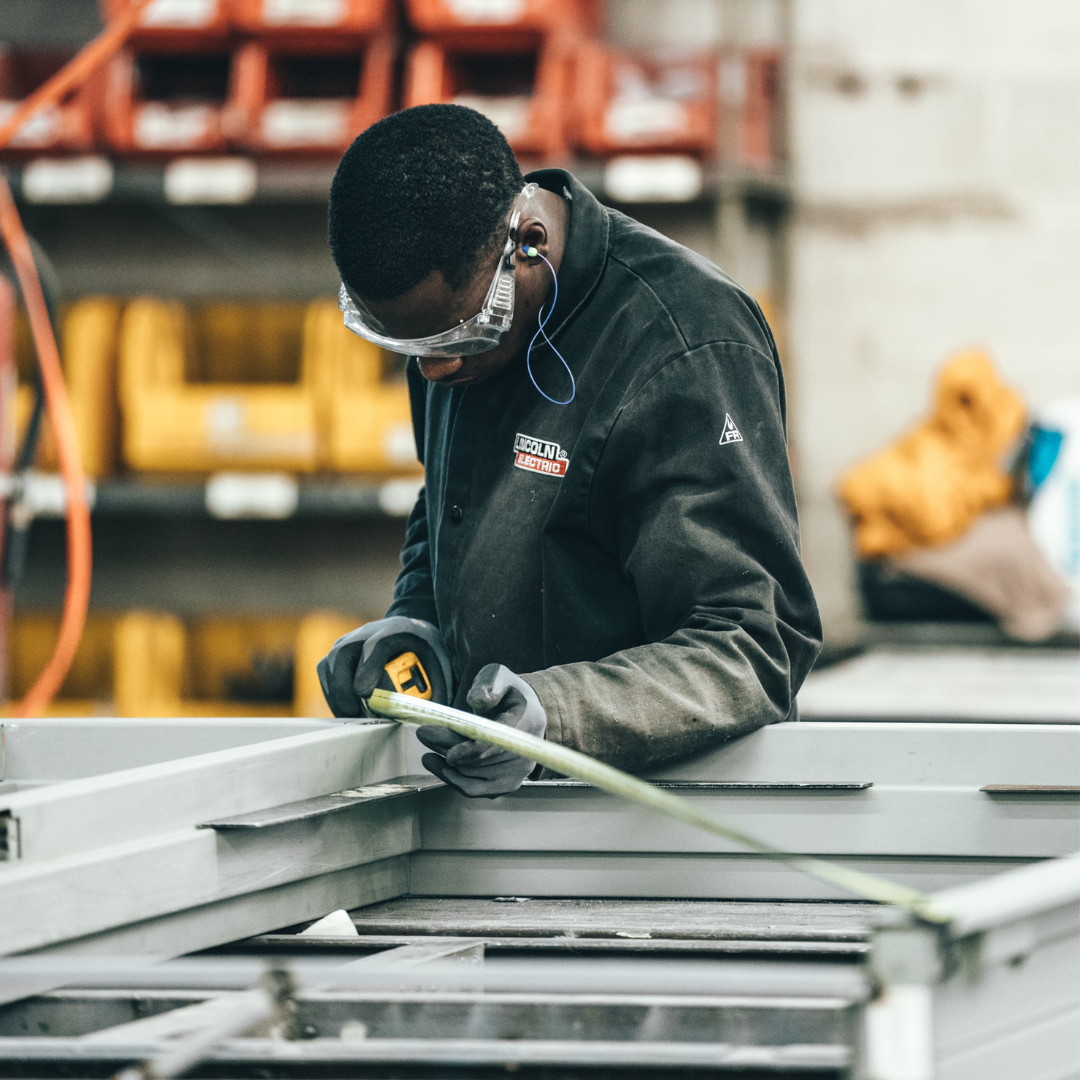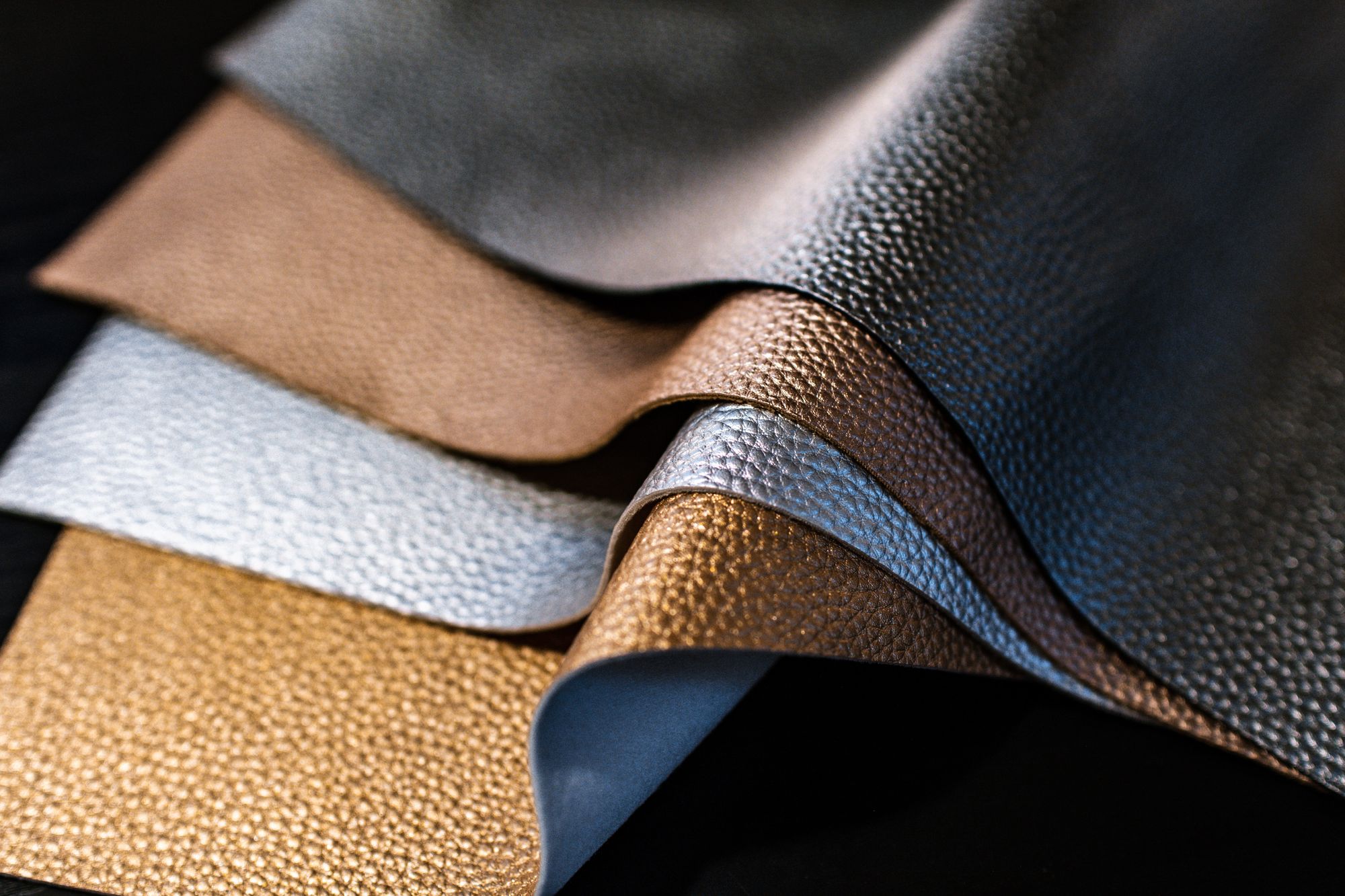The global leather goods market was valued at $414 billion in 2020 and is expected to reach $754 billion by 2028, growing at a CAGR of 7.4% from 2021 to 2028. Since there is so much scope in the leather industry, it is important to understand the opportunities and growth in it. So let’s try to understand the opportunities and challenges in the leather manufacturing industry.
This article covers the following:
- Introduction to the Leather Manufacturing Industry
- History of the Leather Manufacturing Industry
- Types of Leather and their Use
- Leather Production Process
- Leather Manufacturing Industry Value Chain
- Opportunities & Challenges in Leather Manufacturing Industry
- Major Players in the Leather Manufacturing Industry
- Global Leather Manufacturing Industry Market Trends
- Environmental Concerns and Sustainability in Leather Manufacturing
- Future Outlook for the Leather Manufacturing Industry
- The Future of the Leather Manufacturing Industry
- How can Deskera assist you?
Introduction to Leather Manufacturing Industry
The leather manufacturing industry is an important sector that involves the production of various leather goods, including footwear, clothing, bags, belts, and other accessories. The industry is a multi-billion dollar global business, with major players located in countries such as Italy, China, India, Brazil, and the United States.
The process of leather manufacturing involves several stages, including the procurement of raw hides and skins, tanning and processing of the hides, and the production of finished leather products. The raw materials used in leather production come from a variety of sources, including cattle, sheep, goats, pigs, and other animals.
The tanning process involves the use of chemicals and other substances to preserve and strengthen the hides, making them suitable for use in leather products. The type of tanning used can vary, with common methods including chrome tanning, vegetable tanning, and synthetic tanning.
Once the hides have been tanned, they are then processed into finished leather products through cutting, sewing, and other manufacturing processes. The finished products are then sold to retailers and consumers worldwide.
The leather manufacturing industry has faced criticism in recent years due to concerns over animal welfare, environmental impact, and working conditions in some countries. However, efforts are being made to address these issues through improved sustainability practices and increased transparency in the supply chain.
History of the Leather Manufacturing Industry
The leather manufacturing industry has a long and storied history dating back to ancient times. Here is a brief overview of its development over the centuries:
- Ancient Times: The use of animal hides for clothing, footwear, and shelter can be traced back to prehistoric times. The ancient Egyptians, Greeks, and Romans all used leather extensively for various purposes, including military equipment, footwear, and clothing.
- Middle Ages: During the Middle Ages, the leather industry grew in Europe, particularly in cities such as Cordoba in Spain and Florence in Italy. Tanneries were established, and techniques for treating leather were refined, including the use of vegetable tannins to create high-quality leather.
- Industrial Revolution: The Industrial Revolution brought significant changes to the leather industry. Mechanized tanning processes were developed, and the use of machinery made leather production faster and more efficient. The development of the steam engine allowed for larger-scale production and the establishment of large-scale factories.
- 20th Century: The leather industry continued to evolve throughout the 20th century, with advances in technology, transportation, and communication leading to the growth of global trade. Synthetic materials such as plastic and rubber emerged as competitors to leather, but leather remained a preferred material for high-end goods.
Today, the leather industry is a major global industry, with production concentrated in countries such as China, India, and Italy. Leather is used for a wide range of products, including shoes, bags, belts, jackets, and furniture, and demand for high-quality leather continues to be strong.
Types of Leather and their Use
The leather manufacturing industry has a long and storied history dating back to ancient times. Here is a brief overview of its development over the centuries:
- Ancient Times: The use of animal hides for clothing, footwear, and shelter can be traced back to prehistoric times. The ancient Egyptians, Greeks, and Romans all used leather extensively for various purposes, including military equipment, footwear, and clothing.
- Middle Ages: During the Middle Ages, the leather industry grew in Europe, particularly in cities such as Cordoba in Spain and Florence in Italy. Tanneries were established, and techniques for treating leather were refined, including the use of vegetable tannins to create high-quality leather.
- Industrial Revolution: The Industrial Revolution brought significant changes to the leather industry. Mechanized tanning processes were developed, and the use of machinery made leather production faster and more efficient. The development of the steam engine allowed for larger-scale production and the establishment of large-scale factories.
- 20th Century: The leather industry continued to evolve throughout the 20th century, with advances in technology, transportation, and communication leading to the growth of global trade. Synthetic materials such as plastic and rubber emerged as competitors to leather, but leather remained a preferred material for high-end goods.
Today, the leather industry is a major global industry, with production concentrated in countries such as China, India, and Italy. Leather is used for a wide range of products, including shoes, bags, belts, jackets, and furniture, and demand for high-quality leather continues to be strong.
Leather Production Process
The leather production process involves several steps, including:
- Preparing the hide or skin: The first step in leather production is preparing the animal hide or skin. This involves removing any hair or wool, cleaning it to remove dirt and debris, and soaking it in water to soften it.
- Tanning: Tanning is the process of turning raw animal hide into leather. There are two main types of tanning: vegetable tanning and chrome tanning. Vegetable tanning uses natural materials such as bark, leaves, and roots to create a tannin solution that is used for tanning the hide. Chrome tanning, on the other hand, uses chemicals such as chromium salts to tan the hide.
- Fleshing and splitting: After the hide has been tanned, it is fleshed and split to remove any remaining flesh or fat and to create a uniform thickness.
- Coloring: Once the leather has been prepared, it can be dyed to add color. Different dyes and pigments can be used to create a range of colors and finishes.
- Finishing: The final step in the leather production process is finishing. This involves adding a protective coating to the leather to improve its durability, water resistance, and appearance. Different finishes can be applied depending on the desired look and feel of the leather.
Overall, the leather production process requires a combination of traditional techniques and modern technology to create high-quality leather products.
Leather Manufacturing Industry Value Chain
The leather manufacturing industry value chain includes the following steps:
- Raw Material Acquisition: The first step in the leather manufacturing value chain is the acquisition of raw materials. Raw materials are obtained from animal hides and skins, which are sourced from abattoirs and farms.
- Pre-treatment: In this stage, the hides and skins are processed to remove dirt, hair, and other unwanted materials. This process includes soaking, fleshing, dehairing, and bating.
- Tanning: Tanning is the process of converting raw hides and skins into leather. This process involves the use of chemicals and natural substances to stabilize the collagen fibers of the skin and make it resistant to decay. Tanning can be done using different techniques, such as vegetable tanning, chrome tanning, and synthetic tanning.
- Crusting: After tanning, the leather is processed to remove excess water and make it more pliable. This stage involves the use of machines and chemicals to thin, dry, and soften the leather.
- Finishing: In this stage, the leather is dyed, embossed, and coated to give it the desired color and texture. Finishing can also involve polishing, buffing, and waxing to make the leather more attractive and durable.
- Product Manufacturing: The final stage of the leather manufacturing value chain involves the production of finished leather products such as shoes, bags, belts, jackets, and furniture.
Overall, the leather manufacturing industry value chain is complex and involves many stages. The quality of the final product depends on the quality of each step of the value chain, and thus, attention must be given to each stage to ensure that the finished product meets the desired standards.
Opportunities & Challenges in Leader Manufacturing Industry
The leather manufacturing industry, like any other industry, has its own set of opportunities and challenges. Here are some of the key ones:
Opportunities:
- Increasing demand: With the rise of digitalization, the demand for leaders has been increasing rapidly across various industries. The demand is particularly high in emerging economies where there is a need for effective leadership to drive growth and development.
- Technological advancements: The advent of new technologies such as artificial intelligence, machine learning, and the internet of things (IoT) has led to the development of more advanced and efficient leader manufacturing processes. This has made it easier for companies to manufacture high-quality leaders in a shorter period of time.
- Globalization: The globalization of the economy has opened up new markets for leather manufacturers to explore. With the increasing demand for leaders, manufacturers can tap into international markets and expand their reach beyond their domestic markets.
- Innovation: The leather manufacturing industry is constantly evolving, and there are always opportunities for manufacturers to innovate and develop new products that meet the needs of the market. This can help manufacturers stay ahead of their competition and maintain their position in the market.
Challenges:
- Competition: The leather manufacturing industry is highly competitive, with many players vying for a share of the market. This makes it challenging for manufacturers to differentiate themselves and stand out from the crowd.
- Cost pressures: Manufacturing leaders can be expensive, and manufacturers need to keep their costs under control to remain profitable. This can be challenging, particularly in the face of increasing raw material costs, labor costs, and other expenses.
- Regulatory compliance: The leather manufacturing industry is subject to a range of regulations and standards, which manufacturers must comply with to ensure the safety and quality of their products. This can be challenging, particularly for small manufacturers who may not have the resources to comply with all the requirements.
- Environmental concerns: Leader manufacturing can have a significant environmental impact, particularly in terms of energy consumption and waste generation. Manufacturers need to take steps to minimize their environmental footprint and comply with relevant regulations, which can be costly and challenging.
Major Players in the Leather Manufacturing Industry
The leather manufacturing industry is a global market that involves the production of various leather products, including shoes, jackets, handbags, belts, and upholstery. Here are some of the major players in the leather manufacturing industry:
- LVMH (Louis Vuitton Moët Hennessy): LVMH is a French luxury goods conglomerate that owns several fashion brands, including Louis Vuitton, Dior, Fendi, and Celine. LVMH's leather goods division generates a significant portion of its revenue.
- Kering: Kering is another French luxury goods conglomerate that owns several fashion brands, including Gucci, Yves Saint Laurent, Bottega Veneta, and Balenciaga. Kering's leather goods division is a major contributor to its revenue.
- Hermès: Hermès is a French luxury goods company that specializes in leather goods, including its iconic Birkin and Kelly bags. The company also produces clothing, accessories, and perfumes.
- Capri Holdings Limited: Capri Holdings Limited is a fashion holding company that owns several luxury brands, including Michael Kors, Versace, and Jimmy Choo. Its Michael Kors brand is known for its leather handbags and accessories.
- Prada Group: The Prada Group is an Italian luxury fashion house that produces leather goods, clothing, and accessories under the Prada, Miu Miu, and Church's brands.
- Coach: Coach is an American luxury fashion company that produces leather goods, including handbags, wallets, and accessories. The company also offers ready-to-wear clothing and footwear.
- Richemont: Richemont is a Swiss luxury goods company that owns several high-end brands, including Cartier, Dunhill, and Montblanc. Its leather goods division is a significant contributor to its revenue.
- Salvatore Ferragamo: Salvatore Ferragamo is an Italian luxury fashion brand that produces leather goods, clothing, and accessories. The company is known for its handcrafted leather shoes and bags.
- Tapestry Inc.: Tapestry Inc. is a New York-based fashion holding company that owns several brands, including Coach, Kate Spade, and Stuart Weitzman. Its Coach brand is known for its leather goods.
- Tod's: Tod's is an Italian luxury fashion brand that produces leather goods, including shoes, bags, and accessories. The company is known for its high-quality leather craftsmanship.
These are just some of the major players in the leather manufacturing industry, and there are many other companies that contribute to this market.
Global Leather Manufacturing Industry Market Trends
The leather manufacturing industry is a global industry that produces various types of leather products, such as footwear, garments, accessories, and furniture. The industry is highly dependent on the fashion industry and the consumer demand for leather products.
Here are some trends that have been observed in the global leather manufacturing industry:
- Increasing demand for sustainable and ethical practices: Consumers are becoming more conscious about the environmental impact of their purchases, and the leather industry is no exception. There is a growing demand for sustainable and ethical practices in the industry, which has led to the emergence of new technologies and processes that reduce the environmental impact of leather manufacturing.
- Growth in emerging markets: Emerging markets such as China, India, and Brazil are becoming major players in the leather industry. These markets offer lower labor costs and growing consumer demand for leather products, making them attractive for manufacturers.
- Technology-driven innovation: Technology is playing an increasingly important role in the leather industry, with innovations such as 3D printing, digital design, and automation transforming the manufacturing process. This has led to increased efficiency and reduced costs for manufacturers.
- Fluctuating raw material prices: The cost of raw materials, such as animal hides and skins, can be volatile, leading to fluctuations in the cost of production for manufacturers. This can have an impact on the final price of leather products.
- Growing competition: The leather industry is highly competitive, with many manufacturers vying for market share. This has led to increased investment in research and development, marketing, and brand differentiation to stand out in the crowded market
Environmental Concerns and Sustainability in Leather Manufacturing
Leather manufacturing has significant environmental impacts and sustainability challenges. Some of the main environmental concerns associated with leather production include the use of hazardous chemicals, high water usage, air and water pollution, and deforestation.
One of the most significant environmental concerns in leather manufacturing is the use of hazardous chemicals in the tanning process. Leather is typically tanned using chemicals such as chromium, which can be toxic to humans and the environment. These chemicals can contaminate the air, soil, and water, leading to environmental degradation and health problems.
Another issue is the high water usage in leather production. Tanning requires large amounts of water, and the wastewater generated during the process can be highly contaminated with chemicals and other pollutants. This wastewater can pollute local waterways and harm aquatic ecosystems.
Deforestation is also a significant concern in the leather industry, as it is a major driver of the destruction of natural habitats and the loss of biodiversity. Forests are often cleared to make way for cattle ranching, which is the primary source of raw material for leather production.
To address these environmental concerns, sustainable leather manufacturing practices have been developed. Sustainable leather production involves using less harmful chemicals, reducing water usage, and using renewable resources in the production process. Some methods include using plant-based tanning agents and recycling wastewater. Additionally, some companies have implemented traceability systems to ensure that the leather they use is sourced from sustainable and ethical suppliers.
In conclusion, the environmental impact of leather manufacturing can be significant, but there are sustainable practices that can be adopted to mitigate these impacts. It is crucial for the industry to prioritize environmental concerns and take action to address them to ensure a more sustainable and responsible future for leather production.
Future Outlook for the Leather Manufacturing Industry
The leather manufacturing industry has faced a number of challenges in recent years, including concerns over animal welfare, sustainability, and changing consumer preferences. However, the industry has also shown resilience and adaptability, with many companies investing in new technologies and processes to improve efficiency and reduce environmental impact.
Looking to the future, the leather manufacturing industry is likely to continue facing these challenges but also new ones as well. Here are some possible trends and developments that could shape the future outlook of the industry:
- Sustainability: Consumers are increasingly demanding sustainable and ethical products, and the leather industry will need to respond to this trend by adopting more sustainable practices, such as using renewable energy sources, reducing waste, and implementing responsible sourcing of raw materials.
- Digitalization: The use of digital technology, such as automation, artificial intelligence, and data analytics, can improve the efficiency and accuracy of leather manufacturing processes and enable companies to better track their supply chains and respond to changing consumer demands.
- Innovation: The development of new materials, such as lab-grown leather, could disrupt the traditional leather industry, and companies that can adapt to these new technologies may be better positioned for success.
- Regional Shifts: The leather industry is likely to continue to shift towards emerging markets, such as China and India, where there is a growing demand for leather products and where labor and production costs may be lower.
- Regulations: The leather industry will continue to face regulations on animal welfare, environmental impact, and worker safety, and companies that can comply with these regulations while still remaining profitable will have an advantage.
Overall, the future outlook for the leather manufacturing industry will depend on how well companies can adapt to changing consumer demands, embrace new technologies, and adopt sustainable practices.
The Future of the Leather Manufacturing Industry
The future of the leather manufacturing industry is likely to be shaped by a range of factors, including changing consumer preferences, technological advancements, and environmental concerns.
One of the biggest drivers of change in the industry is likely to be consumer demand for more sustainable and environmentally friendly products. As consumers become more aware of the impact that leather production can have on the environment, there is likely to be increased demand for products made from alternative materials, such as plant-based or synthetic leather. This could lead to a decline in demand for traditional leather products, and manufacturers will need to adapt to this changing landscape in order to remain competitive.
In addition, advances in technology are likely to have a major impact on the industry. New production methods, such as 3D printing and biotechnology, could make it possible to create leather products in entirely new ways, potentially reducing the environmental impact of the industry and increasing efficiency. However, these technologies are still in their infancy, and it may take some time before they become widely adopted.
Another trend likely to shape the industry's future is the growing demand for personalized and customized products. Consumers are increasingly looking for products that are unique and tailored to their individual preferences, and leather manufacturers will need to be able to provide this level of customization in order to remain competitive.
Overall, the future of the leather manufacturing industry is likely to be shaped by a range of factors, including changing consumer preferences, technological advancements, and environmental concerns. Manufacturers will need to be adaptable and innovative in order to succeed in this rapidly evolving market.
How Can Deskera Assist You?
As a manufacturer, you must keep track of your inventory stock. The condition of your inventory has a direct impact on production planning. It also has a direct impact on people and machinery use and capacity utilization.
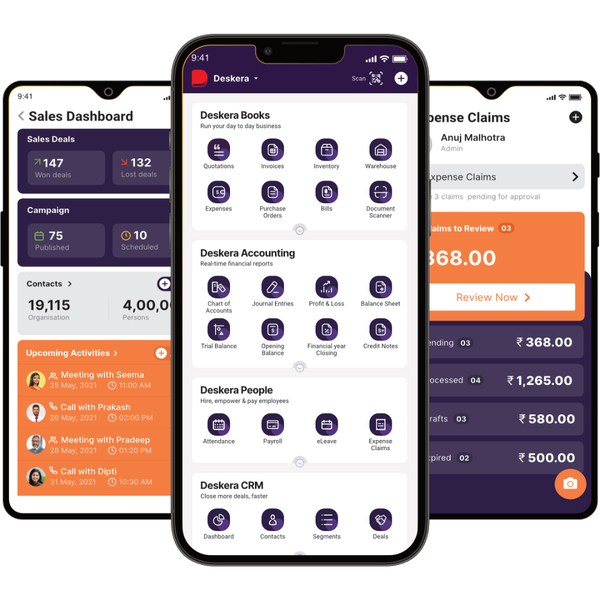
Deskera MRP is the one tool that lets you do all of the above. With Deskera, you can:
- Control production schedules
- Compile a Bill of Materials
- Produce thorough reports
- Make your dashboard
Deskera ERP is a complete solution that allows you to manage suppliers and track supply chain activity in real-time. It also allows you to streamline a range of other company functions.
Deskera Books allows you to manage your accounts and finances better. It helps maintain good accounting standards by automating billing, invoicing, and payment processing tasks.
Deskera CRM is a powerful tool that organizes your sales and helps you close deals rapidly. It enables you to perform crucial tasks like lead generation via email and gives you a comprehensive view of your sales funnel.
Deskera People is a straightforward application for centralizing your human resource management activities. Not only does the technology expedite payroll processing, but it also helps you to handle all other operations such as overtime, benefits, bonuses, training programs, and much more.
Key Takeaways:
- The leather manufacturing industry is highly competitive, with many players vying for a share of the market.
- Another trend that is likely to shape the future of the leather industry is the growing demand for personalized and customized products.
- Emerging markets such as China, India, and Brazil are becoming major players in the leather industry.
- Some of the main environmental concerns associated with leather production include the use of hazardous chemicals, high water usage, air and water pollution, and deforestation.
- The future of the leather manufacturing industry is likely to be shaped by a range of factors, including changing consumer preferences, technological advancements, and environmental concerns.
Related Articles:
